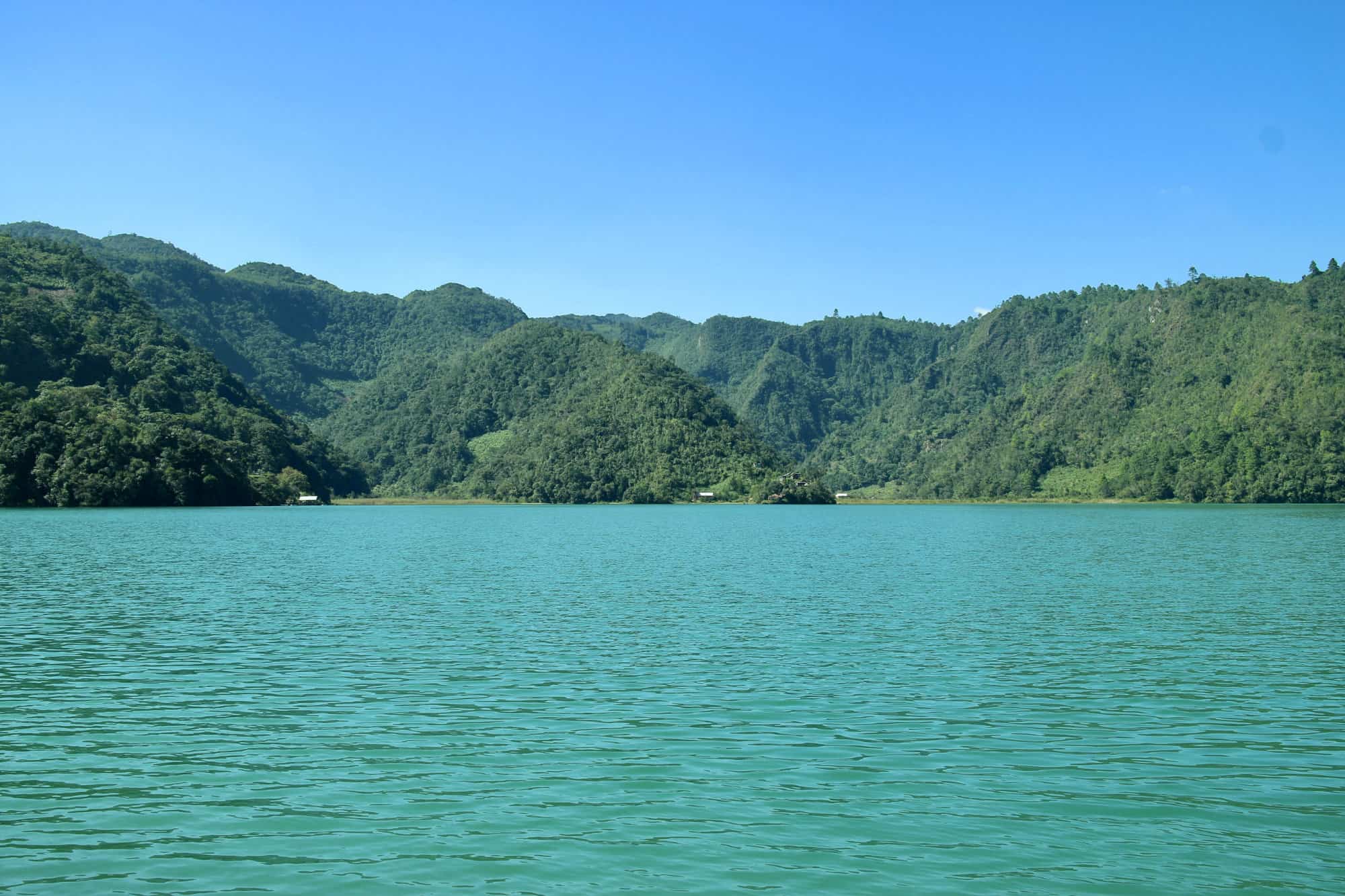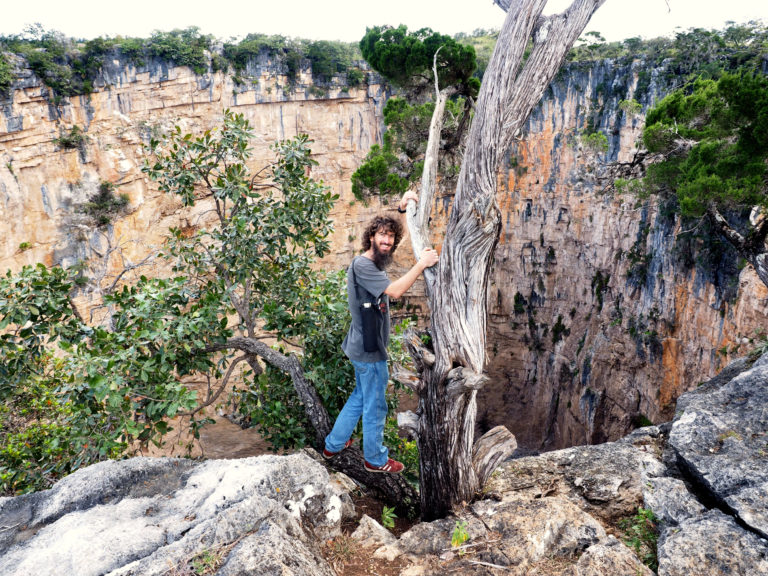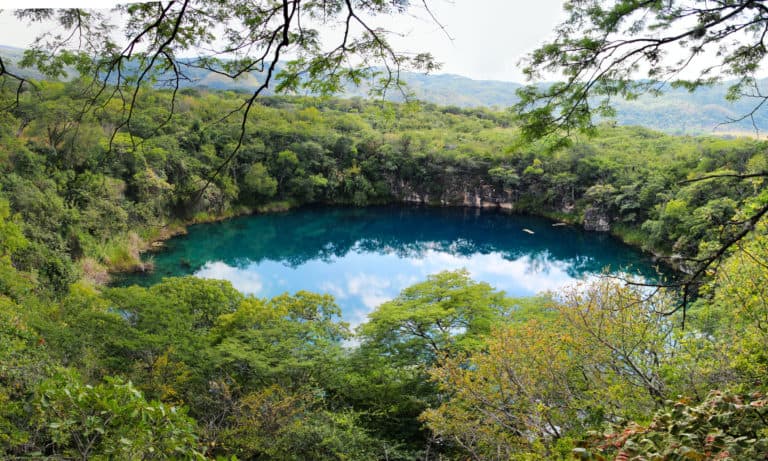Laguna Brava Huehuetenango – Visitor’s Guide
What is Laguna Brava and where is it located?
Laguna Brava, also known as Yolnabaj, Yolnajab, or Ownajab, is the second-largest lake in Guatemala and is located in Nentón Huehuetenango.
The lake is just shy of five miles in length and up to 328 feet deep. It is considered part of a series of lakes that make up the Lagunas of Montebello National Park in nearby Chiapas, Mexico.
Why Visit Laguna Brava?
Laguna Brava contains approximately 79-thousand gallons of sparkling turquoise water, is surrounded by tree-clad mountains, a gushing waterfall, and three beautiful water-filled sinkholes, or cenotes.
It’s nature showing off.
Everyone who goes to Laguna Brava raves about the refreshing swims, the color of the lake, the rowboat tours, the stars at night, etc, etc.
It’s a worthy destination.
But there’s a reason Laguna Brava is on the Roads-Less-Traveled list. It is located 260-miles (nine hours minimum) from Guatemala City. Depending on road conditions and the access point you choose, it could take much longer.
But the hours traversing Guatemala’s varied landscapes are part of the appeal. En route, you’ll cross through the Sierra de Los Cuchumatanes—the highest non-volcanic mountain range in Central America—head north through boulder-riddled hills, cross turquoise rivers and traverse dirt roads pocked with enormous potholes.
If you don’t think your vehicle can make it, never fear. Get as far as you can by car or public transportation, then hire a pickup or shoulder your gear and hike the rest of the way on foot. If it’s the rainy season, be ready for mud and slippery slopes.
Laguna Brava will be the treasure waiting at the end of your trek.
Table of Contents
How to Access Laguna Brava
1. Laguna Brava at El Aguacate
Rowboat Tour to the Cenotes of Ownabaj
Waterfall Hike at Laguna Brava
2. Laguna Brava at Yalambojoch
3. Laguna Brava at San José Frontera
How to Get to Laguna Brava by Car
How to Get to Laguna Brava on Public Transportation
Tour Companies & Local Guide Options
Other Information (Climate, How Long to Stay, When to Go, etc.)
Places to Stay Near Laguna Brava
What is the origin of the name 'Laguna Brava'?
How was Laguna Brava formed?
Other places to visit in the area
How to Access Laguna Brava
There are three different communities surrounding Laguna Brava that serve as gateways to the lake. They are El Aguacate, Yalambojoch, and San José Frontera.
Read on to decide which access point best suits your trip.
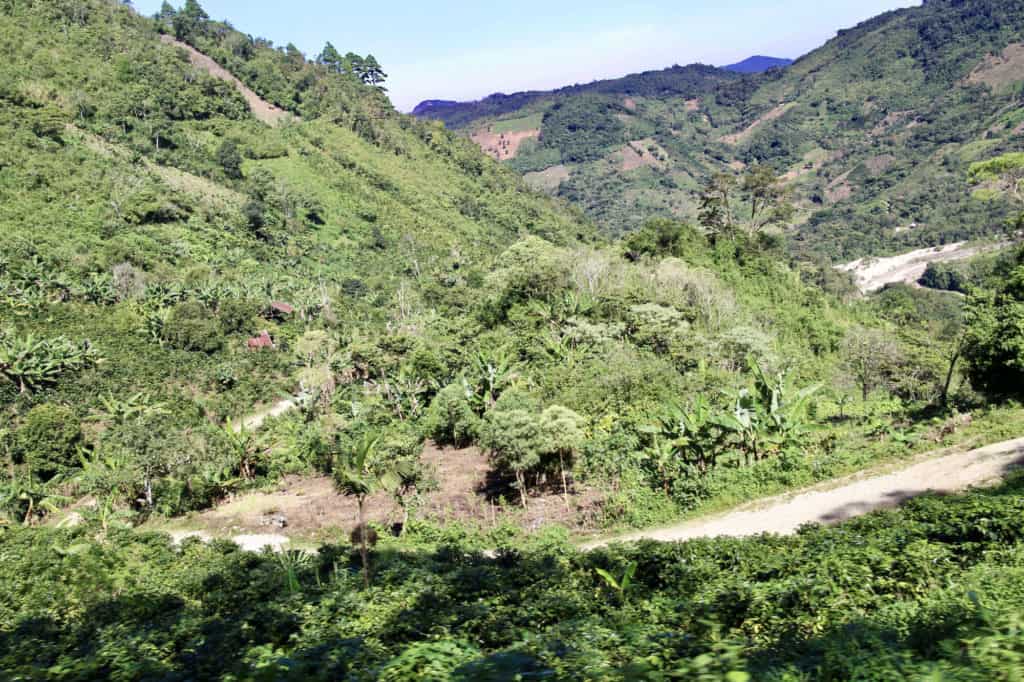
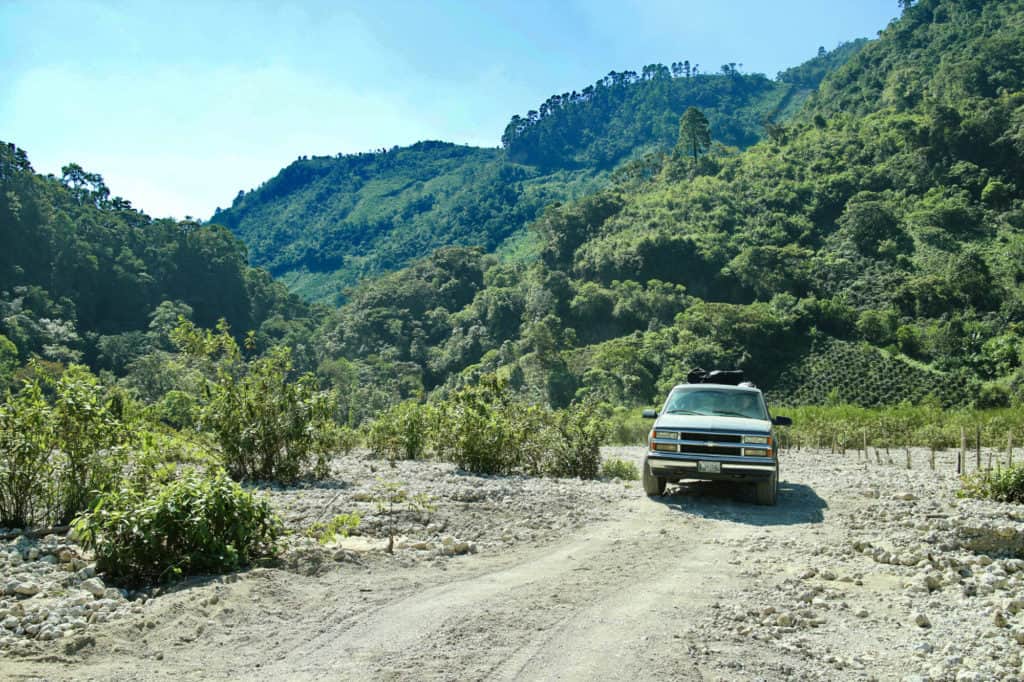
1. Laguna Brava, El Aguacate
Why go to Laguna Brava at El Aguacate?
El Aguacate is the most developed and the easiest-to-reach entryway to Laguna Brava, especially if you don’t have a good 4×4 vehicle, road conditions are poor, or you are dependent on public transportation.
The vast majority of people who visit Laguna Brava go to El Aguacate, so the tours are easy to arrange. If you want to share a pickup down to the lake to save on costs or join a tour with other people, it’s likely to be an option here.
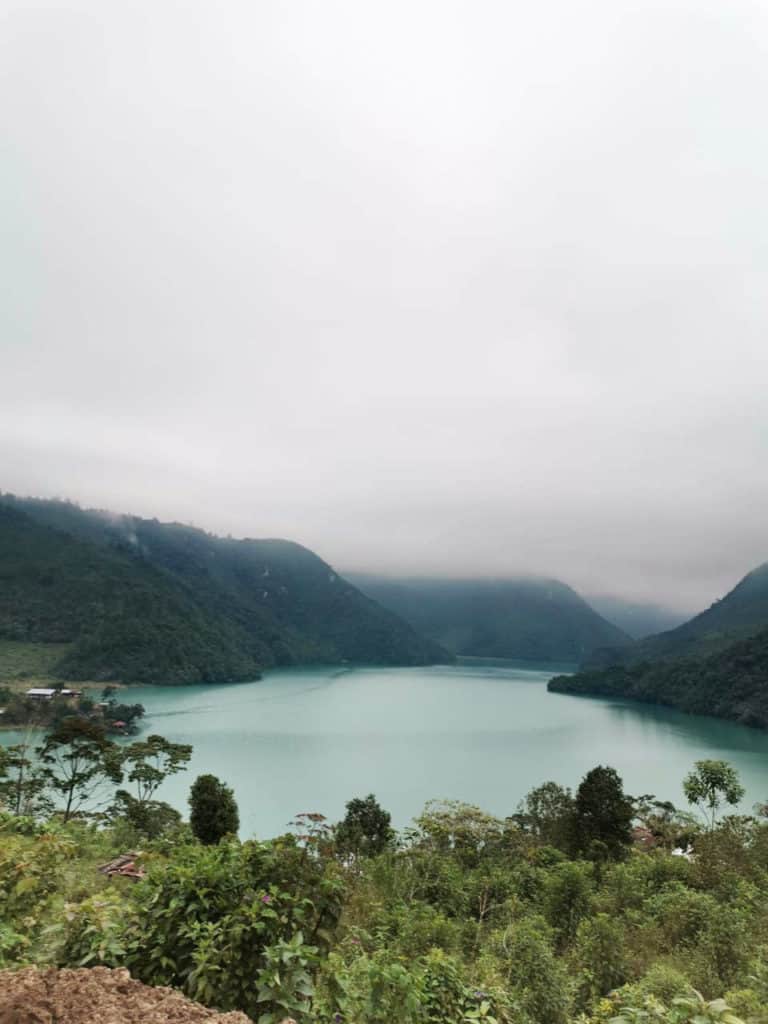
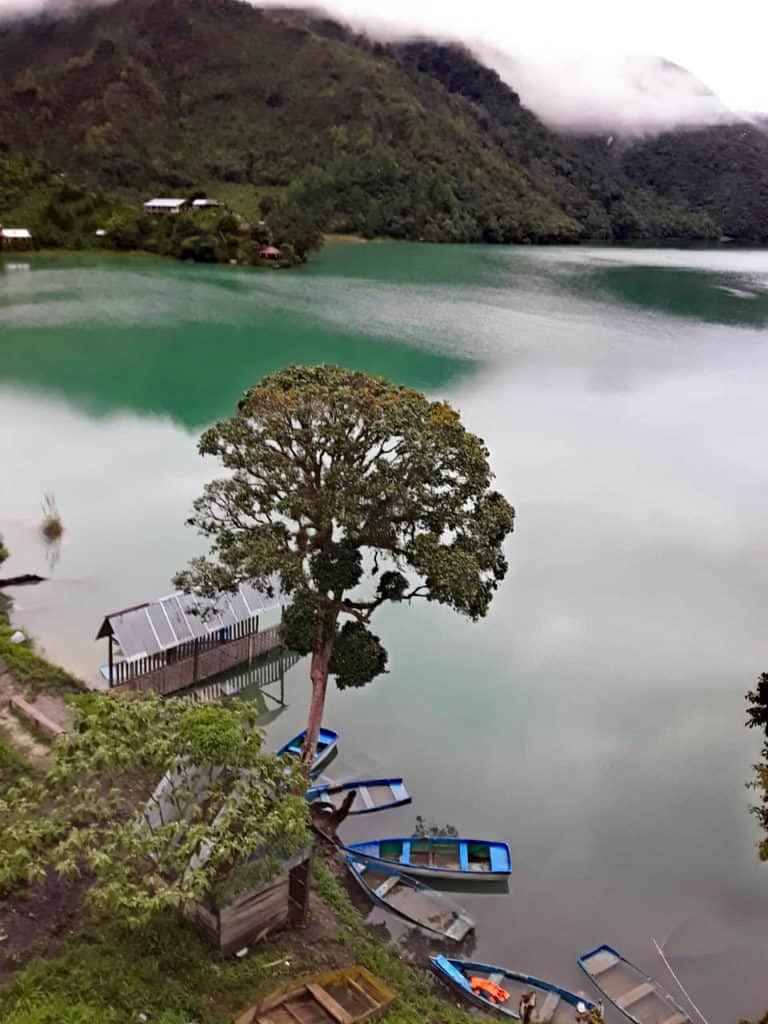
Costs:
Entrance Fee – Q30 per person
Cabins – Q100 per person
Tent Rental – Q25 per person (no sleeping bags or mats available)
Pickup to the lower parking lot: Q300 roundtrip (you’ll need to walk a half-mile further to get to the lake)
Pickup all the way to the lake: Q500 roundtrip
Contact Information:
Tel: +502 4549-1372
+502 5779-5620
+502 5304-7136
Email: [email protected]
Facebook page: https://www.facebook.com/Turismo-Tinajab-2228439624061511
Facilities at Laguna Brava, El Aguacate
- A café/cafeteria (only open on weekends and very minimally stocked. May only sell bottled water!)
- A latrine
- Some very rustic cabins (private or hostel-style)
Important things to note about the facilities at El Aguacate:
Electricity turns on around 6 pm but turns off sometime during the night and may not be on in the morning. There is a water filter, but it is only put out sporadically. There is no toilet paper in the latrine.
Things to do at Laguna Brava, El Aguacate
At El Aguacate you can swim, hike, camp, and stargaze at no extra cost, or pay for one of the following tours:
Row Boat Tour to the Cenotes de Ownajab
Cross almost the full expanse of the lake in a rowboat, drink in the views, then take a short hike to visit and swim in Laguna Brava’s gorgeous sinkholes, the Cenotes de Ownajab.
During times of the year when the water levels in Laguna Brava are high, excess water spills into the cenotes in beautiful streams and waterfalls. According to my research as well as friends who have visited Laguna Brava, this tour is the highlight of the experience. Don’t let the cost deter you!
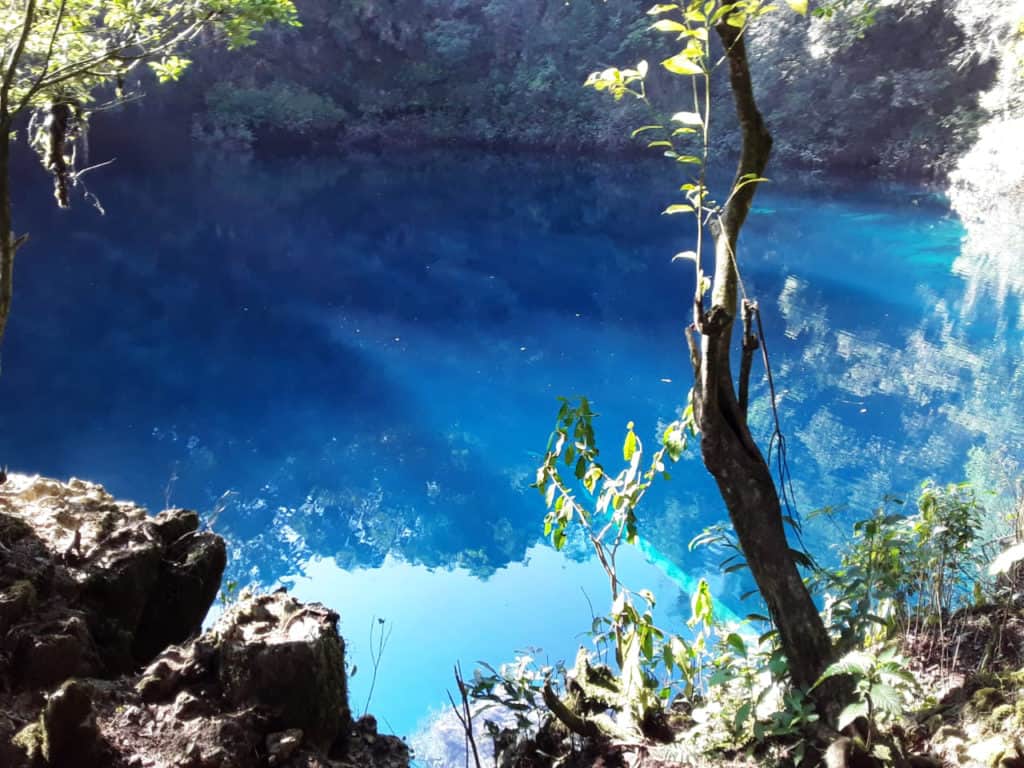
Cost:
Q130 per person*
*This price is for groups of 5 or more people. If your group is less than 5 people you may have to pay an additional Q100 to Q200.
Duration of Tour:
This tour is four and a half hours total. Includes three hours rowing (1.5 hours each way), plus a third-of-a-mile hike to see all three of the cenotes. You’ll also have time to swim in two of the three sinkholes and possibly in a river as well. Take photos, jump off of the steep sides, snorkel around looking at fish, and enjoy nature at its best.
What you’ll see:
- Cenote Verde (Green Cenote)
- Cenote Azul (Blue Cenote)
- Cenote Transparente (Transparent Cenote)
Important Information on the Cenotes de Ownajab Tour at Laguna Brava
- Reserve your tour ahead if you are going on a Saturday or Sunday
- Leave early if possible because this tour will take a good chunk of the day.
- The guide does most of the rowing, but tour participants are encouraged to help out (and get an arm-workout) during this scenic trip from one end of Laguna Brava to its northernmost tip.
- Once the boat docks, don good walking shoes (or water shoes). You’ll hike a sixth of a mile to visit three different water-filled sinkholes, each one a different color. There is a green sinkhole, a blue sinkhole, and a transparent sinkhole.
- You can swim in the blue and transparent sinkholes, an experience you won’t want to miss!
Waterfall Hike at Laguna Brava, El Aguacate
Hiking the waterfall near Laguna Brava is a great way to add to your experience. It is a ten-minute rowboat ride from El Aguacate.
You will hike up a small river to the waterfall. And when I say up a river, I actually mean you’ll be walking in the river. As one participant shared on their TripAdvisor review, “You absolutely get wet going up. It’s impossible not to get your shoes in the water.”*
From the top of the hike, you’ll have nice views of the lake.
Cost of the tour:
Q30 per person
Duration of tour:
1.5 to 2 hours
Important Information about the waterfall hike:
- Take water shoes!
- Be prepared to get wet
- This hike may not be suitable for children.
My experience trying to get to El Aguacate
My family and I planned to go to El Aguacate but found out that a landslide had blocked part of the road the day before we arrived. We heard that at least two cars were stranded at the lake and wouldn’t be able to make it out until the road dried out.
Since we had an entire suburban load of camping and cooking gear that we had no desire to carry in on foot, we opted not to venture down to Laguna Brava at El Aguacate. We also didn’t know that we could hire a pickup to take us down, and none of the locals offered it. Instead, we headed to Laguna Brava at Yalambojoch.
However, when we made it to the Yalambojoch area of Laguna Brava, we could see the road down to El Aguacate and many empty pickups heading back up the hill. So in retrospect, we probably could have made it down (and back up again). Twenty-twenty hindsight.
2. Laguna Brava Yalambojoch
Why go to Laguna Brava at Yalambojoch?
Yalambojoch is the second entryway to Laguna Brava heading east along the Franja Transversal del Norte. It is the next-easiest access point compared to El Aguacate and is the less touristy of the two. This area also has a trail along the waterfront and an archeological site that few people know about.
On the way to Laguna Brava at Yalambojoch, you’ll cross the beautiful Río Salch’ila’, then follow a narrow road through cornfields and orange trees with the river winding back and forth to your left. It’s tranquil and picturesque.
There are additional tourist attractions in the town of Yalambojoch, including an archeological zone called Unin Witz where there are small sculptured heads made out of clay dating back to the ancient Maya. Apparently, there are also hikes into the surrounding ridges.
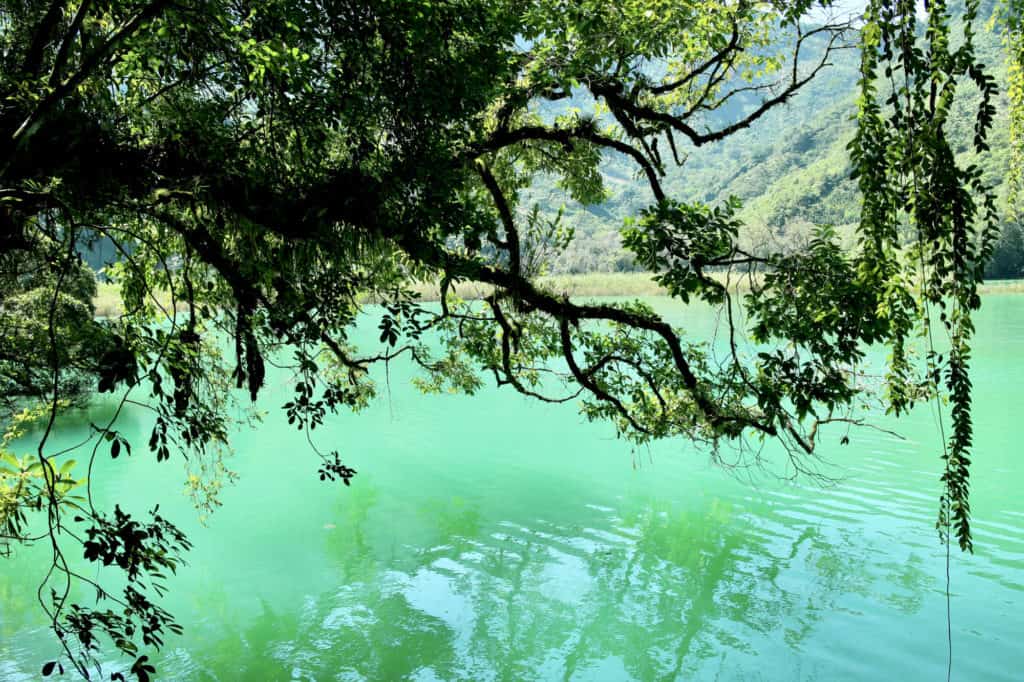
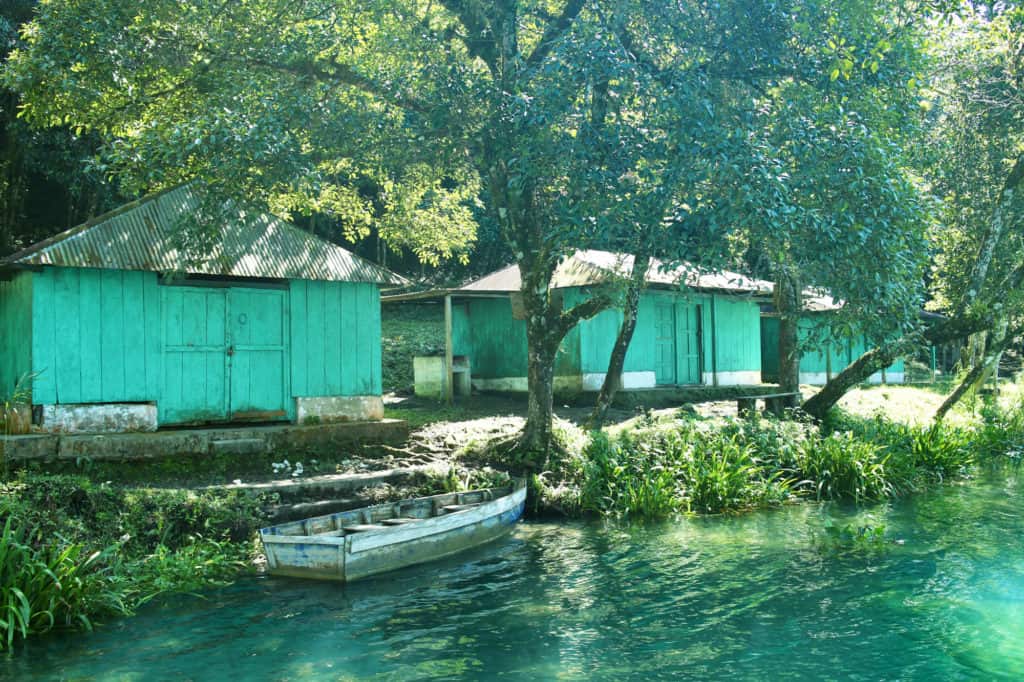
Costs:
Q25 Entrance fee per person
Q5 for a life jacket
Cabins are available but call ahead for pricing and reservations.
Contact Numbers:
Tel. +5024724-1864
+502 5838-1069
Facebook Page: https://www.facebook.com/Lagunabravayalambojoch/
Facilities at Laguna Brava, Yalambojoch
Cabins, rowboats, pier
Things to do at Laguna Brava, Yalambojoch
Swim, hike, hang out on the dock, camp, sleep in the cabins.
If you arrange it ahead, you may be able to hire a local guide to take you on the waterfall hike or to the cenotes.
If you take your own tubes, you may be able to go tubing in the river (confirm there are no rapids or waterfalls first)! We were going to do it, but it got late, we got tired, and the weather turned chilly.
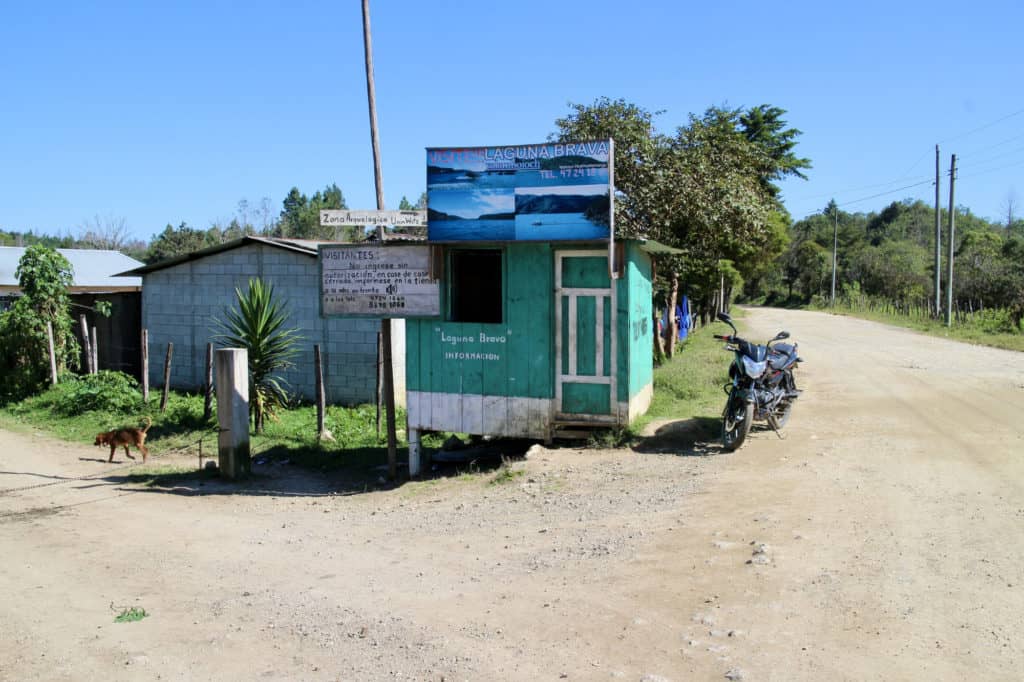


My experience at Laguna Brava, Yalambojoch
When I went with my family in December 2020, the road to the town of Yalambojoch was in very poor condition and we had to drive at 10 miles per hour. It made for a slow trip!
When we reached the town, we called the number at the tourist booth and a friendly man named Marcos told us the road was in great condition and that we could camp or use the cabins.
To save money, we opted to camp.
Marcos let us through the security barrier and we headed down to Laguna Brava. The road was in great shape. It wasn’t muddy (more like chip rock or gravel) and had concrete tracks on the steepest sections. My dad put the suburban into four-wheel-drive low, and we got down with no problem.
Rió Salch’ila’
We stopped at the river to take pictures of the rapids, then drove on, admiring the views. Laguna Brava is in a deep valley, with gorgeous tree-clad mountains on all sides. The quiet was profound.

Eventually, the road narrowed to a single lane with steep corn fields on our right and the river immediately to our left.
Then the road disappeared underwater.
We could see wooden structures and signs in the river ahead of us, so we guessed this was the camping area. Or had been before it was flooded, probably by the double-whammy hurricanes Eta and Iota.
Flooded Campsite
Somewhat chagrined, we walked along the skinny, disintegrating trail next to the flooded area until we hit a larger path about five-feet wide. We got our first glimpse of the lake, then a full view of the arm of Laguna Brava visible from Yalambojoch. It was gorgeous.
After walking about a sixth of a mile, we found the cabins, which were closed up with several rowboats floating nearby. There was nowhere to camp except on the trail (not quite wide enough for comfort) or the pier which was partially underwater and tipped off-kilter from being raised.
By then we knew that the serpentine belt on our suburban was going and we didn’t want to get stranded in a place without tow-truck access or risk the river rising overnight.
We had a picnic lunch, swam in the chilly water, then managed a tricky turn-around to get back out.
Note: When reviewing my pictures, I saw a sign on one of the cabins saying the camping site was further on, so it’s possible that the trail continues past the cabins and that there was a camping area there we never found.
3. Laguna Brava at San José Frontera
Why go to Laguna Brava at San José Frontera?
The Cenotes de Ownajab, Laguna Brava’s gorgeous water-filled sinkholes, are considered the most beautiful features of the lake, so why not go directly there? You can spend all the time you want enjoying the sinkholes, swimming, exploring, and hiking, with no time constraints.
You can reach San José Frontera via the Franja Transversal del Norte or via microbus. Keep in mind it will take 1.5 to 2 hours to drive to San José Frontera from El Aguacate because the road conditions are so poor.
Once you reach the town, pay a fee to get your vehicle through the security barrier. You’ll need to drive further and then take a short walk to the cenotes. Another option, according to a hotel in the region, is to walk in from San José Frontera. The hike follows a clear brook. After about 25 minutes, you’ll reach the first sinkhole. The second and third are both an additional five-minute walk further.
I highly recommend timing your trip so that you can arrive early enough so you have time to hike your stuff in and find a decent campsite well before dark. Since this area is the least visited it is the cheapest and probably the most adventurous route to Laguna Brava.
Keep in mind that if water levels get high enough, the beach and dock can disappear underwater. This might make finding a camping area difficult.
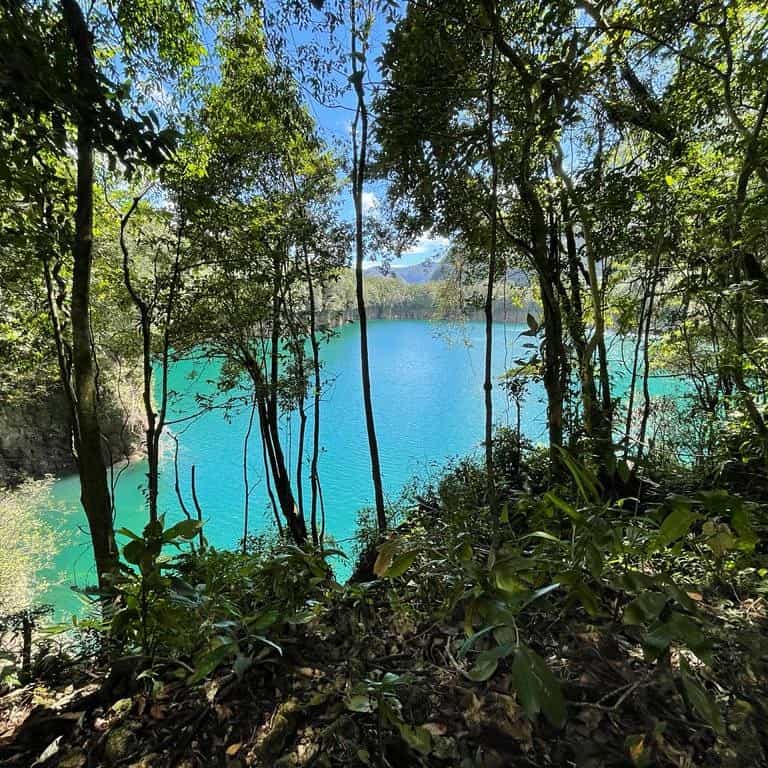
Cost of Entrance:
Q25 per vehicle
Things to do at Laguna Brava, San José Frontera
Swim, hike, visit the cenotes, camp, stargaze, explore
A note on camping:
From mid-March until June, the water levels at Laguna Brava go down and beaches form on the lakeshore. From the pictures, it looks like a gorgeous place to camp.
Some things to keep in mind: According to a local guide, there isn’t much space for camping, so try to go early in the day so you can claim your spot. Be prepared for humid weather.
There is a latrine on site but no other facilities, make sure you take enough water, a water filter, and all the food you need.
My friend’s experience trying to get to Laguna Brava, San José Frontera
On the same day that we went to Yalambojoch, a friend and his three children drove to San José Frontera/Yulaurel. There was no tourist booth here as there were at El Aguacate and Yalambojoch, so he had to ask around. Eventually, he found a girl to open the security barrier for him after he paid Q25 for the car.
He stopped to buy firewood and tortillas and learned from the locals that the road was in poor condition and he’d likely have to hike in. So he hired them to go along as porters, but after driving further, the road ended. It had been completely washed away by the hurricanes. By then it was starting to get dark, and with three kids in tow, he decided it wasn’t wise to continue. He plans to go again sometime but will aim to arrive early in the day.
Local guide, Gaspar Paiz told me that it’s about 2 hours drive to San José Frontera. Assuming the road isn’t washed out, you can get within a few minute’s walk of the sinkholes.
How to Get to Laguna Brava
How to Get to Laguna Brava by Car
Head west on the Pan-American Highway (CA-1) towards Huehuetenango, continuing on to Camojá before turning north towards Nentón. Continue heading north towards Finca La Trinidad. When you reach La Trinidad, take the right-hand junction and keep driving until you reach El Aguacate.
The road is in decent condition up until the town of Chaculá, after which it turns to dirt. The town of El Aguacate is five to ten minutes drive past Chaculá. You can pay the entrance fee (Q30 per person) at the tourist booth. There are bathrooms available for a small fee, and parking for those who want to leave their vehicles here and then hire a pickup for Q150 to the lower parking lot or Q250 to go all the way to the lake shore. I’ve heard that horses are available. You can also hike in on foot.
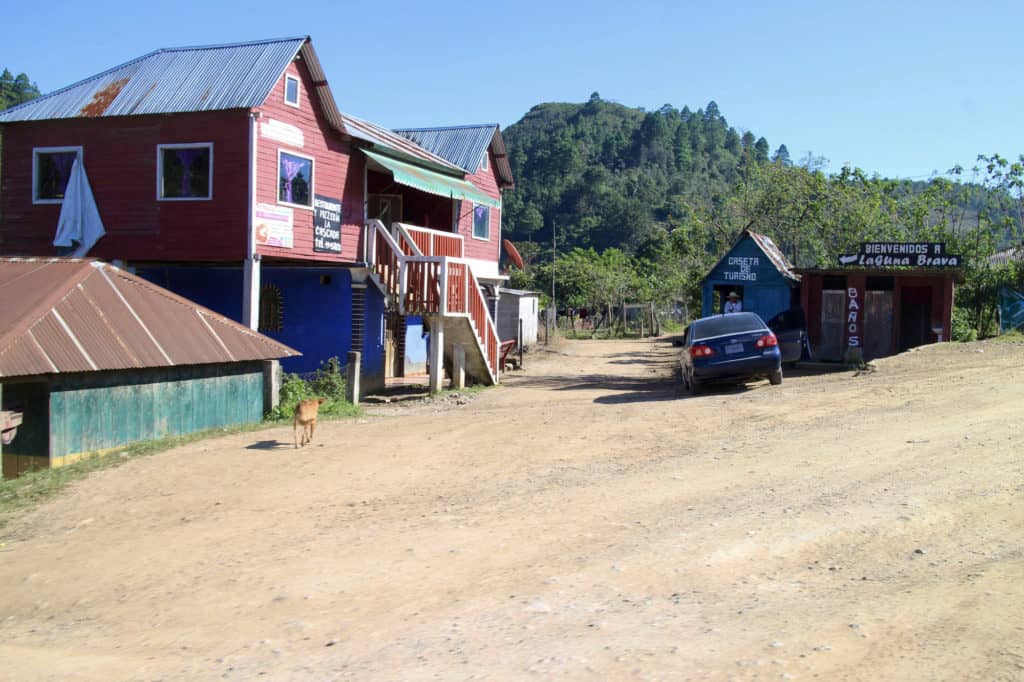
The lower parking lot is 4.35 miles (7 km) down the road, and the lake itself another sixth of a mile (1 km) further. This last part of the road is so steep and narrow that only two pickup drivers will take people down it (for an extra fee), so keep that in mind if you have a lot of things to carry or aren’t fond of walking.
If you do have a 4×4, you can make it down to this lower parking lot and possibly all the way to the lake. But consider road conditions before you commit.
My contact in El Aguacate told me that getting down is usually not a problem, but getting back up again can be dicey if the road is muddy.
How to Get to Laguna Brava on Public Transportation
To get to Laguna Brava on Public Transportation, you’ll need to take several different buses or microbuses. At each different place where you need to change buses, you can ask for the “terminal de buses” and say the name of your next destination, for example: “¿Bus a Nentón?” People are generally helpful. If you aren’t sure how much the fare is, you can ask someone sitting next to you before the “ayudante” comes by to charge. (¿Cuánto cuesta el pasaje a ____?)
If you are leaving from Guatemala City:
Option 1 – Take Transportes Halcones from Guatemala City (Cz Roosevelt 37-47 Z-11) to Huehuetenango. It should cost between Q 65.00 and Q 100.00 depending on whether it is an economy or luxury bus. Follow the instructions for leaving from Huehuetenango below.
Option 2 – Take Transportes Cristóbal Colon from Guatemala City to Huehuetenango (Q 120.00). The bus leaves at 8 P.M on Mondays, Wednesdays, and Fridays. Or, if possible, take this same transport all the way to Camojá. According to one source, this will cost Q 215.00. and the buses leave at 10:15 P.M and arrive in Camojá around 6:30 A.M. However I was unable to verify this route with the company.
If you are leaving from Huehuetenango:
Go to the bus terminal and catch a bus or microbus from Huehuetenango to Camojá Q 25.00
In Camojá, catch a bus to Nenton Q20.00
Time: 1 hour
In Nentón, catch a bus to Finca La Trinidad Q 15.00
Time: 1 hour
In Finca La Trinidad, catch a bus to El Aguacate Q15.00
In El Aguacate, you can hire a pickup to take you the rest of the way down to the lake. It should cost around Q150 total for the pickup to take you down to the lower parking lot (you’ll still need to walk further to get to the lakeshore) or you can pay Q250 to go all the way down. If you can find other people to go with you on the pickup you can share the cost and it will come out cheaper per person. Hiking is also an option, but it’s about 8 kilometers total from the town of El Aguacate to the lakeshore.
Tour Companies & Local Guide Options at Laguna Brava Huehuetenango
Go with a Tour Company
If you don’t have your own transportation or would like the ease and efficiency of going with a tour agency, here are a few companies that offer expeditions to the Laguna Brava:
Maya Kakaw Travel +502 5702 0551
Adrenalina Tours +502 5308 5106
Guate Tour +502 2293 2438
Hire a Local Guide
If you want someone with on-the-ground knowledge of the area, consider hiring a local guide.
Local guides know the current climate and road conditions, can take you on the tours of the area and can orient you to the best places to stay depending on your preferences. They can also arrange for 4×4 transportation if you need it.
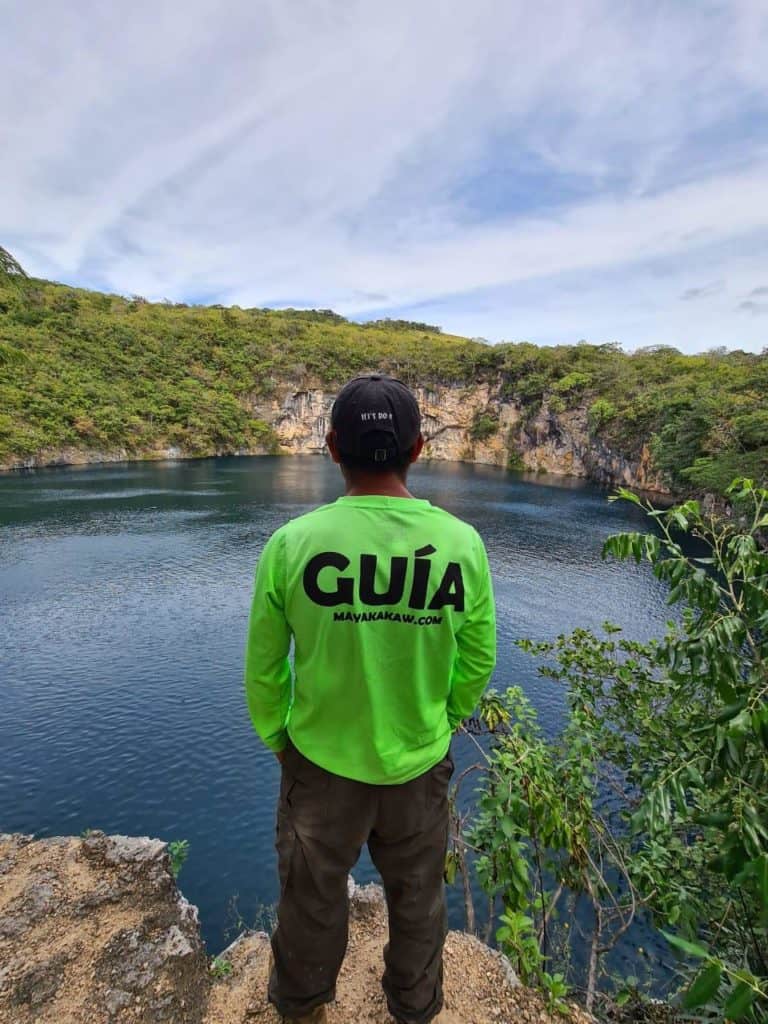
They are fairly affordable and may be able to make your trip much smoother.
Although I haven’t used any of these guides myself, they’ve been great sources of information for this and other articles about tourist destinations in Nentón.
All of the guides listed below are registered and certified with INGUAT, Guatemala’s Institute of Tourism, and are bilingual in Spanish and Chuj. They lead tours to Cenotes de Candelaria, Hoyo el Cimarrón, Laguna Brava, Laguna Internacional, Lagunas de Montebello (Mexico), and a new tourist destination called Pico del Diablo. Other tours may be available on request.
Local Guides based in El Aguacate, Huehuetenango:
Gaspar Paiz Paiz +502 3273-3276
Velasco Dominguez +502 4899-7431
Raul Velasco +502 4791 8653
Marcos Paiz +502 5304 7136
Other Information on Laguna Brava Huehuetenango
Climate and Elevation
Laguna Brava is roughly 3,379 feet (1030 m) above sea level, the weather is humid and can be cool and rainy. The water itself is chilly and refreshing.
When to Go:
Although you can go to Laguna Brava at any time, expect weather and road conditions to be worse from May to October (rainy season) and potentially into November.
How Long to Stay:
I recommend staying two nights at Laguna Brava so you can fully appreciate all that the lake has to offer and so you have time to go on the cenote tour and the waterfall hike. Since it’s so far away and hard to access, you might as well take the time to set up camp, relax, explore, and enjoy it to the full!
What to Take:
- comfortable clothes for hiking
- sweater, rain jacket
- swimsuit
- water shoes
- extra shoes if your first pair get muddy
- camera
- water, snacks, food
- camping gear if not taking or renting your own (tent, sleeping bag, mat)
Where to Buy Supplies
Once you reach the Franja Transversal del Norte, it becomes much harder to find fresh vegetables and fruits, so make sure to stock up in one of the larger towns along your route, like Nentón or Camojá.
There are two gas stations and a hotel in Yalambojoch.
Other Things You Should Know
- You are responsible for packing out your own garbage
- No Motorized Boats are permitted
- Hunting and Ecologically damaging activities are not allowed
Places to Stay Near Laguna Brava
If camping isn’t your thing, here a few accommodation options to check out. Note: I haven’t stayed at any of these, so I can’t vouch for them. Do your own research!
Hacienda Nueva Escocia
This picturesque hotel is located east of Yalambojoch along the Franja Transversal del Norte. They offer single, double, and hostel-style rooms as well as food service, camping areas, and guides. Contact: +502 3012 6929
Posada El Aguacate
This rustic Posada is located in the town of El Aguacate and costs Q50 per person. It includes a double bed, a common bathroom, and hot-water showers. There is a cafeteria/small restaurant on site. Contact: +502 3061 0780.
Hotel de Per el Sueco, Yalambojoch
This hotel has decent reviews and is located right in the town of Yalambojoch.
Posada Rural Finca Chaculá
This posada is easily accessible. It is only five minutes drive from the town of El Aguacate BEFORE the road turns to dirt, ruts, and potholes.
At the time of this post, a room for two people costs Q425, a room for three people costs Q525, a cabin for seven people costs Q735. There is no electricity (candles only), but there is hot water for showers and the price includes breakfast. Contact: +502 5780 4855.
What is the origin of the name ‘Laguna Brava’ and what does it mean?
Laguna Brava is the Spanish translation of the original Chuj Mayan Language name for the lake. Although I came across several variants of the name, including Yolnabaj, Yolnajab, and Ownajab, local guide Gaspar Paiz says that the correct name in Chuj is “Ownajab”.
“Ow” means fierce or wild and “najab” means lake.
Although Laguna Brava is usually tranquil, when the wind hits it at certain times of day the waves can get so rough that people in the distant environs can hear them crashing against the shore.
How Was Laguna Brava Formed?
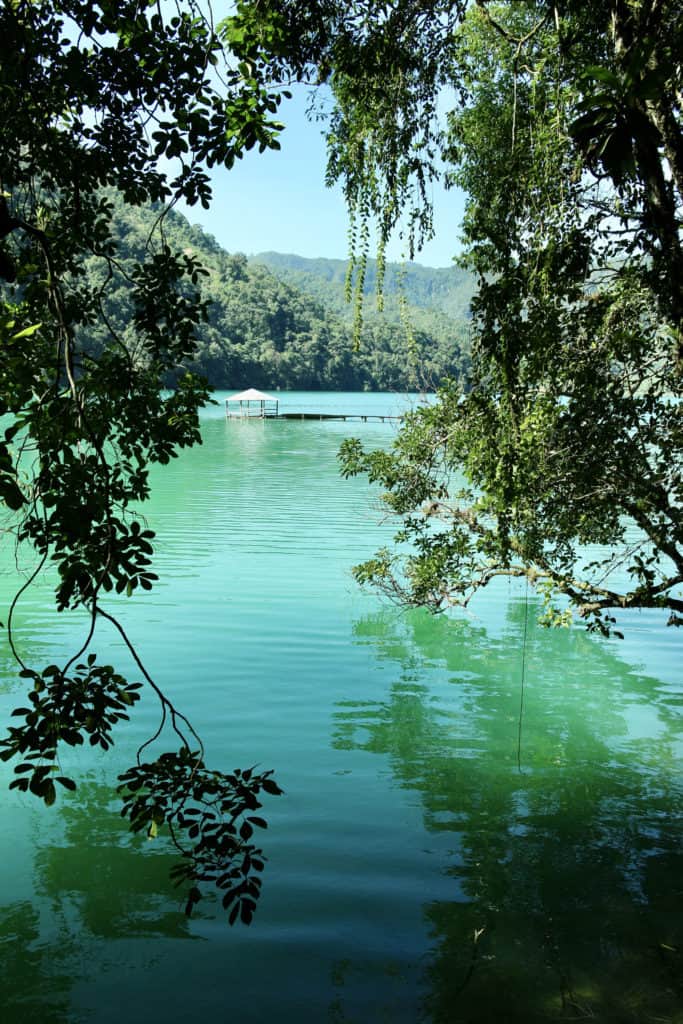
Geologist Hecton Monzón claims that Laguna Brava was formed when a landslide blocked a V-shaped ravine, impounding a river behind a wall of debris.*
Whether or not this is the case, the lake is a unique feature in a region that’s made up primarily of limestone.
Limestone, you see, is water-soluble.
Over time water eats away at the limestone, carving out tunnels and channels through the rock. These eventually turn into caves, trenches, or other features of limestone environments like sinkholes or karst towers (like those at the Li River in China).
Many karstic lakes only exist for portions of the year because they get drained away through all of these underwater pipes and depend on rainfall to get filled back up again. They are called episodic lakes or turloughs.
But Laguna Brava is an exception.
Even though the water levels fluctuate between the rainy season and dry season, Laguna Brava is surprisingly stable. It probably doesn’t have a lot of outlets through eroded pipes and troughs. This can happen when tiny bits of limestone and other sediments weld together, creating an impermeable lining.
Pretty cool.
Other places to visit in the area:
Once you’ve enjoyed Laguna Brava to the full, check out these other cool destinations in the region:
Hoyo del Cimarron
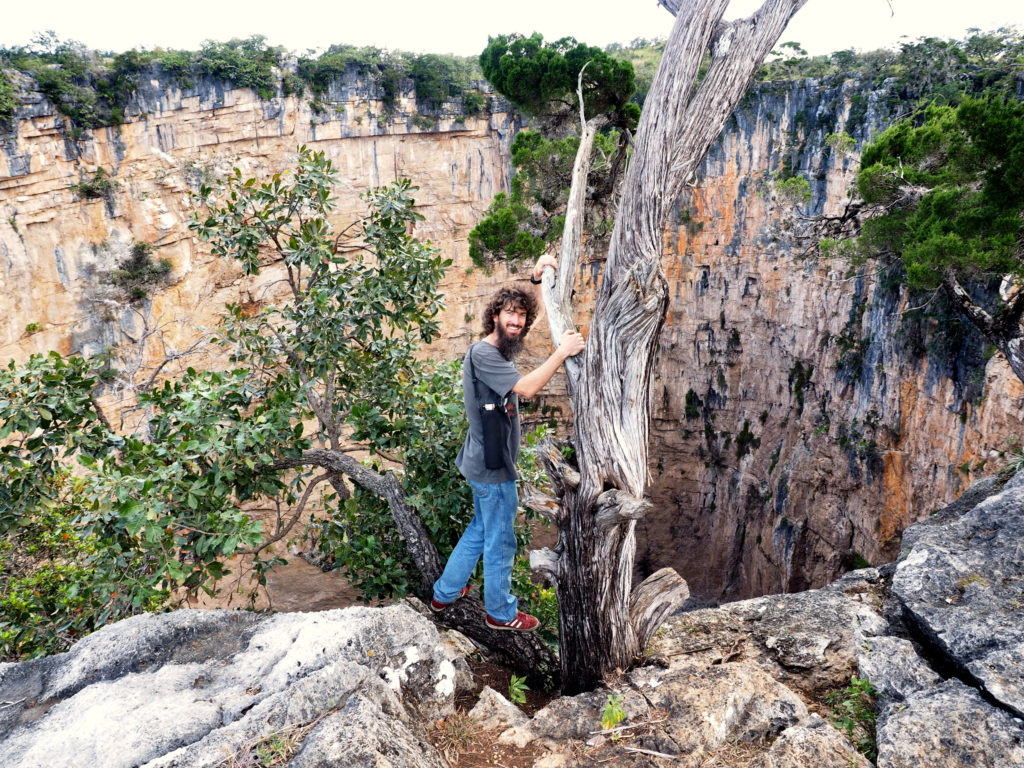
The Hoyo del Cimarron is a 656-foot-deep tiankeng sinkhole. It’s crazy deep and crazy awesome. Hike in, lie on your belly, and marvel at this strange natural wonder!
Laguna Internacional and Tzicao, Mexico
Cross into Mexico as an “illegal”! This un-official border between Mexico and Guatemala is best known for the Laguna Internacional. This small lake is half in Mexico and half in Guatemala. You can take pictures of yourself with one foot in Guatemala and one in Mexico.
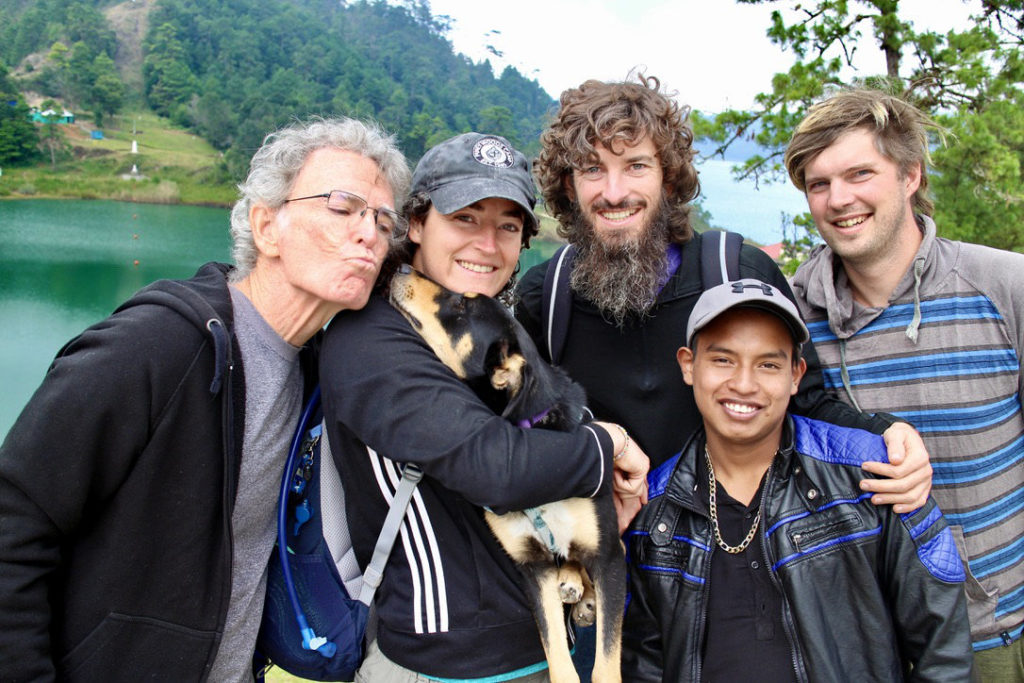
Eat some quesadillas or a whole fried fish, drink some sangria soda, or rent kayaks and paddle around Laguna Tzicao.
We opted to buy mojarras and take them back to our campsite for an end-of-trip fish fry. We made a huge bonfire, roasted plantains on the coals, and watched Jupiter and Saturn set over the hills.
How to get there:
Turn north off the main road in Finca La Trinidad, pay the fee at the security barrier (talanquera), then drive forty-five minutes over dirt roads towards Finca El Quetzal. Once there, you’ll need to park your car in a parking lot (some include access to a bathroom) and then continue on foot into Mexico.
Most vendors accept both Quetzales and Pesos.
Cenotes de Candelaria
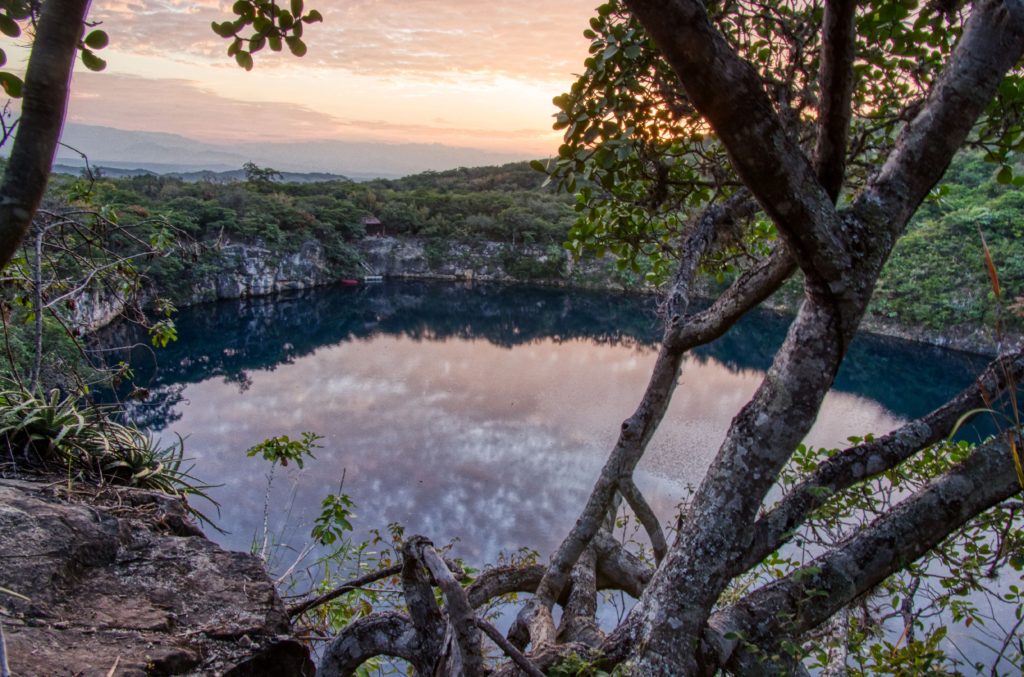
These water-filled sinkholes are located about one and a half hours south of El Aguacate and are a great place to swim, camp, hike, and enjoy nature.
Read my post about the Cenotes de Candelaria to find out everything you need to know about visiting this beautiful place.
***GUATEMALA TRAVEL PLANNING GUIDE***
Should I buy Guatemala travel insurance?
YES — Personally, I always travel with travel insurance because it gives me extra peace of mind. SafetyWing is an excellent travel insurance company that’s quite affordable. Plus, if you travel longterm, it’s a snap to renew on a month to month basis. You can keep renewing for up to a year and still pay the same deductible.
Where’s the best place for finding cheap flights to Guatemala?
When I purchase a ticket, I always search several different sites. Kayak and Expedia are great places to start running a search. Spirit is usually the cheapest carrier, but American Airlines and United also sometimes offer excellent deals.
What’s the best way to book my Guatemala accommodations?
I recommend booking.com for finding and booking hotels in Guatemala. For vacation rentals, I recommend VRBO.com — it offers beautiful and unique spots to stay.
What’s the best way to book Guatemala tours?
Viator is a great tour booking site with several excellent options available in Guatemala’s main tourist areas including Tikal, Atitlán, Antigua, and Acatenango. There’s a nice range of prices and options available.
Can you drink the water in Guatemala?
No – Don’t drink the tap water! Instead, buy purified water from any corner store or grocery store in Guatemala.
Be sure to brush your teeth with that water as well to avoid getting sick. And hydrated, especially when traveling to high elevations.
Do I need a visa for Guatemala?
Probably not — Visitors to Guatemala from “Category A” countries like the United States, Canada, the UK, New Zealand, Australia, and most European countries are automatically given a 90-day tourist visa (in the form of a passport stamp) when entering Guatemala.
This visa is valid for Guatemala, Nicaragua, Honduras, and El Salvador. At the end of 90 days, it can be renewed once at Guatemala’s Migración without leaving the country.
After 180 days, you will have to travel outside of Central America before returning. Check to see if you need a visa.
Will my phone work in Guatemala?
It’s possible, but check with your provider in advance to see if Guatemala is covered. If not, you can easily pick up a local SIM card.
There are essentially only two carriers in the country: TIGO and CLARO. Both have good coverage.
